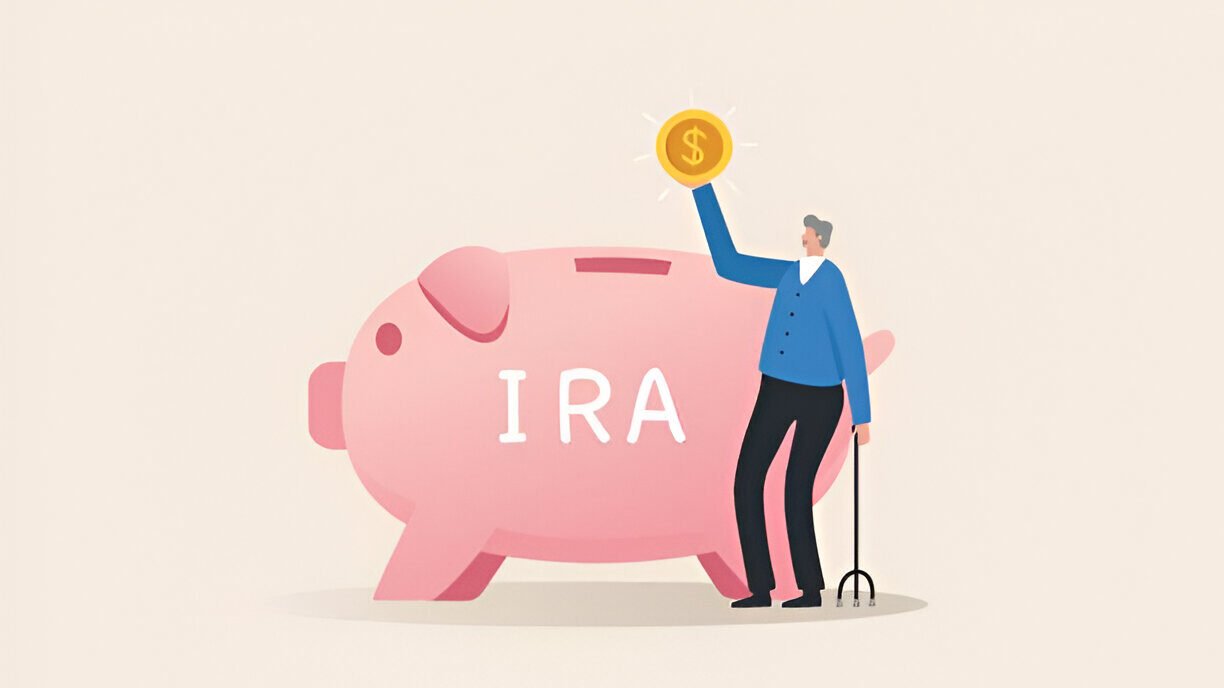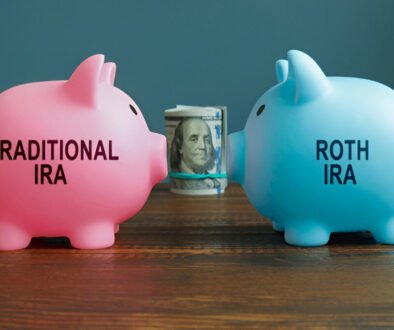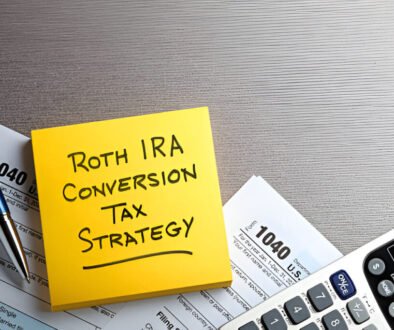How to open a Roth IRA in 5 easy steps
How to open a Roth IRA without the confusion, learn 5 easy setup steps, contribution rules, and benefits for long-term savings
Opening a Roth IRA might sound complicated, but it’s actually much easier than you think and it could transform your retirement. With just a few smart steps, you can build long-term, tax-free wealth for your future.
In this post, we’ll show you exactly how to open a Roth IRA in 5 easy, actionable steps. You’ll learn who qualifies, how to choose a provider, fund your account, and start investing even if you’ve never done it before.
No jargon. No guesswork. Just clear guidance to help you get started with confidence.
Let’s start by understanding why a Roth IRA is such a powerful retirement tool.
Understanding Roth IRA Benefits and Eligibility
A Roth IRA is a powerful retirement savings vehicle that offers unique advantages. Before opening one, it’s essential to understand the benefits and eligibility requirements to determine if it’s the right choice for your financial future.
Tax Advantages: After-Tax Contributions with Tax-Free Growth and Withdrawals

Unlike traditional retirement accounts, Roth IRAs are funded with after-tax dollars, meaning you pay taxes on your contributions upfront. The significant advantage comes later: both your investment growth and qualified withdrawals are completely tax-free. This tax structure makes Roth IRAs particularly valuable if you expect to be in a higher tax bracket during retirement or want to enjoy tax-free income in your later years.
For the 2025 tax year, you can contribute up to $7,000 annually if you’re under 50 years old, or $8,000 if you’re 50 or older through catch-up contributions. Remember that contributions must be made by the tax filing deadline (typically in April of the following year).
No Required Minimum Distributions (RMDs) During Your Lifetime
One significant advantage of Roth IRAs over traditional retirement accounts is the absence of required minimum distributions (RMDs) during your lifetime. With other retirement accounts, you’re typically forced to withdraw a minimum amount annually once you reach a certain age, regardless of whether you need the money. Roth IRAs allow your investments to continue growing tax-free for as long as you live, giving you greater flexibility in retirement planning.
Estate Planning Benefits for Your Beneficiaries
Roth IRAs offer valuable estate planning advantages. When your beneficiaries inherit your Roth IRA, they can receive tax-free distributions, making it an efficient way to transfer wealth. The absence of RMDs during your lifetime also means you can potentially leave a larger inheritance for your loved ones.
2025 Income Eligibility Limits for Different Filing Statuses
For the 2025 tax year, eligibility to contribute to a Roth IRA depends on your modified adjusted gross income (MAGI) and tax filing status:
- Single filers: Full contributions allowed with MAGI under $150,000, phasing out completely at $165,000
- Married filing jointly: Full contributions allowed with MAGI under $236,000
- Married filing separately: Can only contribute if MAGI is under $10,000, with contributions phasing out at higher income levels
To determine eligibility, you’ll need to calculate your MAGI according to IRS guidelines, which may require consultation with a tax professional. If your income exceeds these limits, you might consider alternative strategies like a “backdoor Roth IRA” conversion or contributing to workplace retirement plans like 401(k)s and 403(b)s.
Remember that you must have earned income that meets specific IRS guidelines to contribute to a Roth IRA, though there are no age restrictions—even minors can have Roth IRAs with parental facilitation.
Now that we’ve covered the fundamental benefits and eligibility requirements for Roth IRAs, let’s explore how to choose the right Roth IRA provider for your needs. Selecting an appropriate financial institution is a crucial step in maximizing the advantages of this retirement savings vehicle.
How to open a Roth IRA Account
Opening a Roth IRA account is a straightforward process that can set you up for long-term, tax-free growth. You don’t need a financial background or a large sum of money to begin—just a few key steps.
In this guide, you’ll learn exactly how to open a Roth IRA account, what documents you’ll need, how to choose a provider, fund your account, and start investing. No jargon. No confusion. Just a clear, step-by-step process to help you take control of your retirement.
Choosing the Right Roth IRA Provider
Now that we understand the benefits and eligibility requirements for a Roth IRA, selecting the right provider is a crucial next step in your retirement planning journey. Your choice of provider will significantly impact your investment experience, from costs to available options.
Key factors: Fees, investment options, and customer service
When evaluating Roth IRA providers, consider these essential factors:
- Fees: Look for providers with low or no annual account fees. Companies like Fidelity and Charles Schwab offer $0 annual fees, which can save you money over time. Pay attention to expense ratios on funds and trading commissions.
- Investment options: The best providers offer diverse investment choices including stocks, bonds, ETFs, and mutual funds. Fidelity stands out with its ZERO index mutual funds that have no expense ratios.
- Customer service: Quality support is invaluable, especially for newer investors. Providers like Fidelity and Charles Schwab are known for exceptional customer service with multiple support channels.
Online brokers vs. robo-advisors: Pros and cons of each
Online Brokers:
- Pros: Greater control over investment choices, typically lower fees, advanced trading platforms
- Cons: Requires more investment knowledge and active management
Robo-Advisors:
- Pros: Automated portfolio management, less hands-on work, algorithm-based investment strategies
- Cons: Generally higher management fees, less investment flexibility
For self-directed investors who prefer making their own investment decisions, online brokers like Fidelity and Charles Schwab are excellent choices. If you prefer a hands-off approach, robo-advisors like Betterment, Wealthfront, and Vanguard Digital Advisor offer automated portfolio management.
Top recommended providers like Fidelity and Charles Schwab
Based on comprehensive evaluations by financial experts, these providers consistently rank among the best for Roth IRAs in 2025:
Fidelity Investments:
- Best overall provider
- Zero management fees
- Extensive commission-free trading options
- No minimum investment requirement
- Exceptional customer support
Charles Schwab:
- Ideal for active traders with its thinkorswim platform
- Comprehensive services and educational resources
- Strong customer service
- Low-cost investment options
Other highly-rated options include:
- Betterment: No minimum investment, user-friendly interface
- Wealthfront: Excellent portfolio diversification
- SoFi Active Investing: Strong overall performance
- Interactive Brokers: Perfect for advanced traders
Considering professional financial guidance options
For those seeking personalized advice, several avenues exist:
- Financial advisor platforms: Services like Datalign Advisory can connect you with pre-screened financial advisors for a free consultation.
- Hybrid services: Some providers offer a combination of robo-advisory services with access to human financial advisors. SoFi Robo Investing stands out in this category.
- Full-service brokerages: Companies like Merrill Edge provide robust customer service and can offer more comprehensive financial planning.
When considering professional guidance, evaluate the cost versus the value provided, particularly if you have a complex financial situation or sizeable assets.
With your Roth IRA provider selected based on these considerations, you’ll be ready to move on to the next step in the process: opening your Roth IRA account. This will involve completing the application process and setting up your initial contribution strategy.
Opening Your Roth IRA Account

Now that you’ve chosen the right Roth IRA provider that meets your needs, it’s time to take the next step in your retirement planning journey—opening your account. Whether you’ve selected a broker like Fidelity, Charles Schwab, or SoFi, the process of setting up your Roth IRA follows similar steps across providers.
A. Gathering necessary documentation (ID, SSN, bank details)
Before beginning the application process, prepare the following essential documents:
- Valid identification: A government-issued photo ID such as a driver’s license or passport
- Social Security Number (SSN): You’ll need to provide your nine-digit SSN for tax reporting purposes
- Bank account information: Have your checking or savings account details ready, including routing and account numbers for funding your IRA
- Employment information: Details about your current employment status and income may be required to verify eligibility
Having these documents readily available will streamline the application process and help you avoid delays in establishing your account.
B. Completing the application process
The application process for a Roth IRA is typically straightforward:
- Visit your chosen provider’s website or physical location
- Select the Roth IRA option from available account types
- Decide between an Automated (robo-advisor) or Self-Directed investment approach
- Fill out the required personal information including contact details and financial information
- Verify your identity by providing the documentation gathered in the previous step
- Review the terms and conditions before submitting your application
Most financial institutions now offer completely online application processes that can be completed in as little as 15-20 minutes.
C. Designating beneficiaries
An important but often overlooked step is designating beneficiaries for your Roth IRA. This ensures your assets are transferred according to your wishes should something happen to you.
- Primary beneficiaries receive the assets first
- Contingent beneficiaries receive assets if primary beneficiaries are deceased
- You’ll need to provide names, relationships, dates of birth, and Social Security numbers for each beneficiary
- Consider updating beneficiary information after major life events like marriage, divorce, or the birth of children
Unlike traditional IRAs, Roth IRAs don’t require minimum distributions during your lifetime, making them excellent vehicles for estate planning. Your beneficiaries can inherit your Roth IRA tax-free, though they will be subject to required minimum distributions.
D. Setting up bank connections for funding
The final step in opening your Roth IRA is connecting your bank account for funding:
- Provide your banking details (routing and account numbers)
- Verify the connection through micro-deposits or instant verification
- Decide on your initial contribution amount (within the annual limits)
- Choose between one-time or recurring contributions
For 2025, contribution limits are $7,000 per year for those under 50 and $8,000 for those 50 and older, subject to income limits. Remember that for married couples filing jointly, the contribution limit phases out between MAGIs of $236,000 to $246,000, while for singles, it ranges from $150,000 to $165,000.
Setting up automatic recurring contributions can help you maximize the benefits of tax-free growth and ensure you’re consistently building your retirement savings.
With your Roth IRA account now open and funded, you’re ready to move on to the next crucial step: selecting the right investments that align with your retirement goals and risk tolerance. In the following section, we’ll explore how to build a portfolio that balances growth potential with appropriate risk management based on your unique financial situation and timeline.
Selecting the Right Investments for Your Goals
Now that you’ve successfully opened your Roth IRA account, it’s time to make one of the most critical decisions in your retirement planning journey: choosing the right investments. The tax-free growth and withdrawal benefits of a Roth IRA make your investment selections particularly important.
Assessing Your Risk Tolerance and Retirement Timeline
Before selecting investments, consider two key factors: your risk tolerance and retirement timeline. If you’re younger with decades until retirement, you might tolerate more risk for potentially higher returns. If retirement is approaching, a more conservative approach may be appropriate. Remember that investments within a Roth IRA grow tax-free, making this account ideal for investments with high growth potential.
Understanding Investment Options (Stocks, Bonds, Mutual Funds)
Several investment options are particularly well-suited for Roth IRAs:
- Dividend Stocks and Funds: These provide regular income from established companies and can be particularly tax-efficient in a Roth IRA.
- Growth Funds: These offer high-reward potential but come with higher risk due to volatility.
- S&P 500 Index Funds: These provide diversification and stable returns with moderate risk.
- Bond Funds: These typically offer lower risk than stocks and can provide steady income.
- REITs (Real Estate Investment Trusts): These offer high dividends and growth potential, benefiting from the tax efficiency of Roth IRAs.
- High-Yield Bond Funds: These provide higher returns but come with increased default risks.
Building a Diversified Portfolio Aligned With Your Goals
Diversification is crucial for managing risk. Consider building a portfolio that includes:
- Core Holdings: S&P 500 or total market index funds for broad market exposure
- Income Generators: Dividend stocks or REITs for regular income
- Growth Components: Growth funds or small-cap funds for long-term appreciation
- Stabilizers: Bond funds to reduce overall portfolio volatility
Avoid keeping too much cash in your Roth IRA, as this doesn’t leverage the tax advantages of the account. Similarly, speculative investments like cryptocurrencies and penny stocks are generally discouraged due to their volatility.
Low-Risk Options Like U.S. Treasury Bills With Competitive Yields
For more conservative investors, particularly those closer to retirement, low-risk options can provide stability:
- Target-Date Funds: These automatically adjust your asset allocation as you approach retirement, becoming more conservative over time.
- U.S. Treasury Bills and Bonds: These government-backed securities offer competitive yields with minimal risk.
- Stable Value Funds: These provide security with modest returns.
With your investment strategy now in place, we’ll next explore how to maximize your Roth IRA’s potential through contribution strategies, regular reviews, and long-term planning approaches that can help secure your financial future in retirement.
Maximizing Your Roth IRA’s Potential
Now that you’ve selected the right investments for your Roth IRA goals, it’s time to focus on maximizing your account’s potential. Making strategic decisions about contributions and understanding withdrawal rules will help you get the most from this powerful retirement vehicle.
Understanding 2025 Contribution Limits ($7,000 or $8,000 if 50+)
For 2025, the Roth IRA contribution limits remain at $7,000 for individuals under 50 years old and $8,000 for those aged 50 and older. These catch-up contributions allow older individuals to boost their retirement savings if they’ve previously underfunded their accounts.
It’s important to note that eligibility to contribute depends on your modified adjusted gross income (MAGI):
- Single filers can make full contributions with a MAGI under $150,000
- Joint filers qualify for full contributions with a MAGI below $236,000
- For married couples filing separately, you can only contribute if your MAGI is under $10,000
Remember that your total contributions across both traditional and Roth IRAs cannot exceed these annual limits, and your contributions cannot surpass your earned income for the year.
Creating a Regular Contribution Schedule
To maximize your Roth IRA’s growth potential, establish a consistent contribution schedule. You can contribute until the tax filing deadline of the following year (typically April 15), but starting early gives your investments more time to grow.
Some effective strategies include:
- Setting up automatic monthly transfers from your checking account
- Contributing a lump sum at the beginning of the year to maximize growth potential
- Allocating tax refunds or bonuses to reach your annual contribution limit
The key is consistency—Fidelity recommends saving at least 15% of your pretax income for retirement across all your accounts.
Rules for Tax-Free Withdrawals of Contributions and Earnings
One of the most attractive features of Roth IRAs is the flexibility of withdrawals:
- You can withdraw your contributions (but not earnings) at any time without penalties or taxes
- To withdraw earnings tax-free, you must be at least 59½ years old and have held the account for at least five years
- Exceptions exist for certain situations like disability or first-time home purchases
Unlike traditional IRAs, Roth IRAs have no required minimum distributions (RMDs), allowing your money to continue growing tax-free throughout your lifetime.
Balancing Roth IRA with Other Retirement Accounts
A comprehensive retirement strategy often involves multiple account types:
- If you have access to an employer-sponsored 401(k) with matching contributions, consider contributing enough to get the full match before funding your Roth IRA
- You can contribute to both a 401(k) and a Roth IRA in the same year
- You can also contribute to both traditional and Roth IRAs within the same year, as long as your total contributions don’t exceed the annual limit
For those who exceed Roth IRA income limits, consider a “backdoor Roth IRA” strategy by first contributing to a traditional IRA and then converting it to a Roth IRA.
If you accidentally contribute more than allowed, you must correct the excess by withdrawing the extra amount plus any earnings before your tax filing deadline to avoid a 6% penalty tax on the excess.
Opening Your Roth IRA: A Step Toward Financial Freedom
Starting a Roth IRA doesn’t have to be complicated. By following the five steps outlined in this guide—understanding the benefits and eligibility requirements, choosing the right provider, opening your account, selecting appropriate investments, and maximizing your contributions—you’re setting yourself up for tax-free growth and greater financial security in retirement.
Remember, while Roth IRAs don’t offer immediate tax benefits like traditional IRAs, they provide significant long-term advantages. Your contributions grow tax-free, you can withdraw them at any time without penalties, and you won’t face required minimum distributions during your lifetime. Whether you’re managing your investments independently or working with a financial advisor, the most important step is to start today. Even small, regular contributions can grow substantially over time thanks to the power of compound interest and tax-free growth. Your future self will thank you for the financial freedom that comes with a well-funded Roth IRA.




10 Mistakes To avoid with your Roth IRA Augusta 2025 - GWI
August 4, 2025 @ 7:00 am
[…] you need a six-figure salary to start a Roth IRA? That’s a costly […]
Benefits of Starting an IRA for your child - GWI
August 4, 2025 @ 8:07 am
[…] A Roth IRA for your child might just be the jackpot. […]
How Much Tax Do you pay on a Roth IRA conversion? - GWI
August 4, 2025 @ 11:38 am
[…] timing can save you a bundle when converting to a Roth IRA. December isn’t actually the best month for this financial move. Consider making your […]
Roth IRA vs 401k for self-employed individuals - GWI
August 5, 2025 @ 4:42 am
[…] you open a Roth IRA, you’re basically getting the keys to your own investment kingdom. Unlike some retirement […]